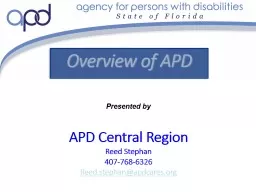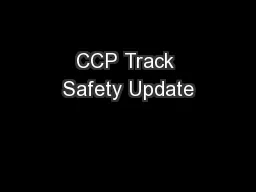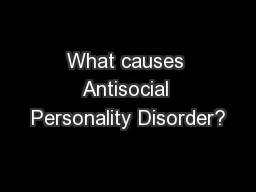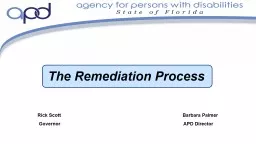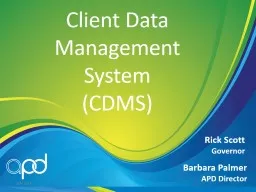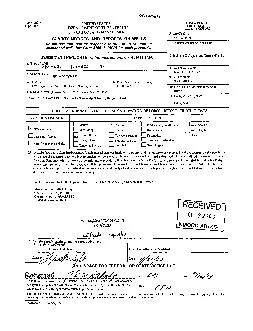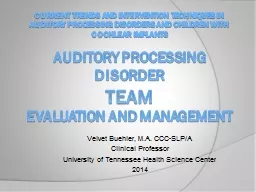PPT-Overview of APD Presented by
Author : KingOfTheWorld | Published Date : 2022-08-04
APD Central Region Reed Stephan 4077686326 Reedstephanapdcaresorg 2 The Agencys Mission The Agency Supports Persons with Developmental Disabilities in Living Learning
Presentation Embed Code
Download Presentation
Download Presentation The PPT/PDF document "Overview of APD Presented by" is the property of its rightful owner. Permission is granted to download and print the materials on this website for personal, non-commercial use only, and to display it on your personal computer provided you do not modify the materials and that you retain all copyright notices contained in the materials. By downloading content from our website, you accept the terms of this agreement.
Overview of APD Presented by: Transcript
Download Rules Of Document
"Overview of APD Presented by"The content belongs to its owner. You may download and print it for personal use, without modification, and keep all copyright notices. By downloading, you agree to these terms.
Related Documents

